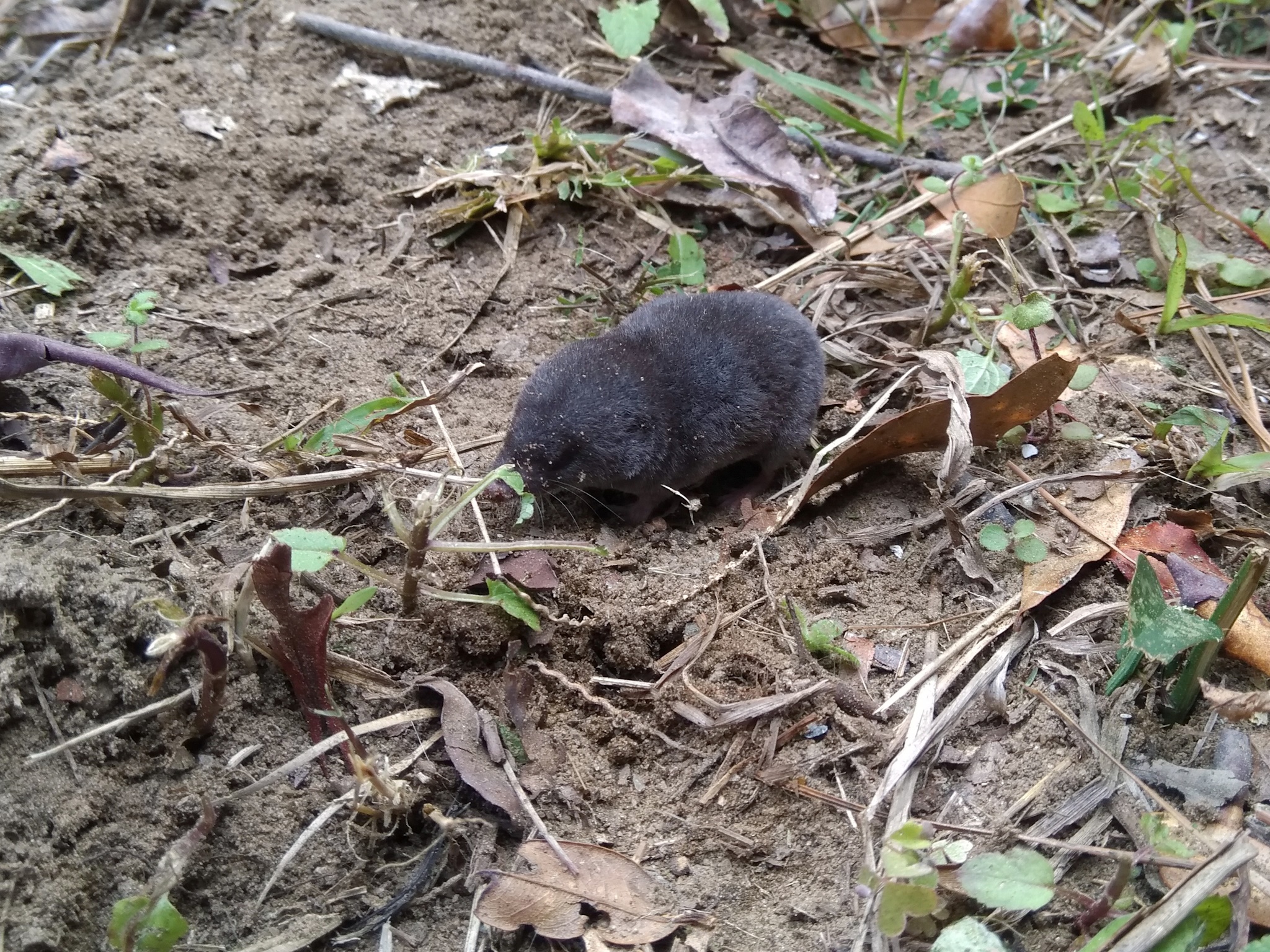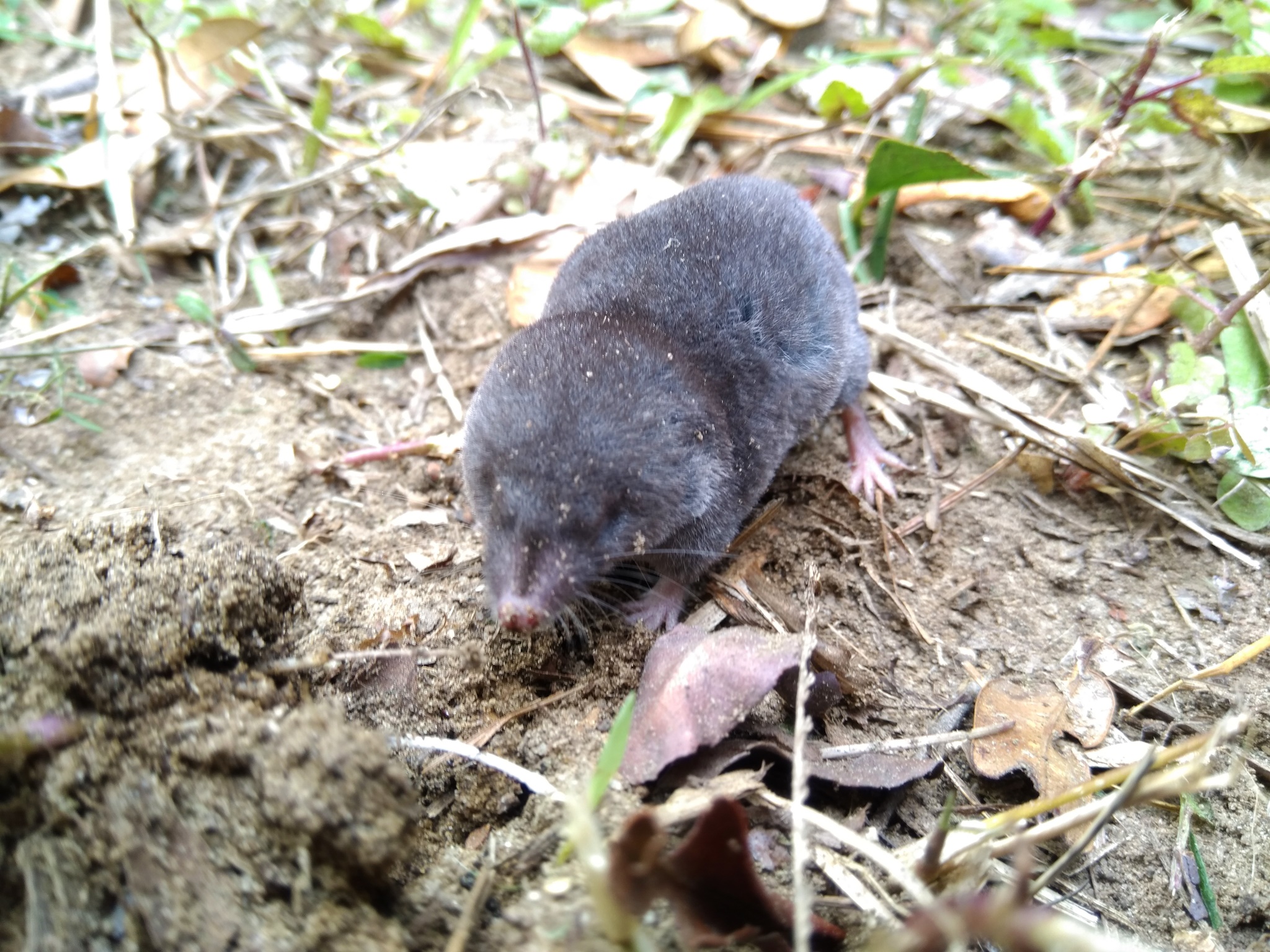


This week for Flora and Fauna Friday we have a cryptic mammal with some crazy physiology, the Southern Short-tailed Shrew (Blarina carolinensis).
The Southern Short-tailed Shrew is native to the Southeast and found throughout the Atlantic Coastal Plain from Virginia to Texas as well as up the lower Mississippi River Valley into Kentucky. Shrews are an odd family of creatures belonging to the mammal order Eulipotyphla, the true insectivores. This order also contains moles and hedgehogs. Shrews share several traits with moles, notably a dense coat of soft fur, a soft pointed snout, and tiny poorly formed eyes that render them practically blind. Shrews, at a glance, look a lot like a mouse or vole, being about the same size and shape. But even a cursory up close examination reveals just how different they are.
Here in the Lowcountry of South Carolina, we have three species of shrew: the Southeastern Shrew (Sorex longirostris), North American Least Shrew (Cryptotis parvus), and the Southern Short-tailed Shrew (Blarina carolinensis). The Southeastern Shrew is about two-inches long with a tail half that length and ruddy brown fur. The North American Least Shrew is a little over two-inches long with a tail a third of that and gray-brown coat. (Meaning the Southeastern Shrew is actually smaller.) The Southern Short-tailed Shrew is by far the most common shrew you’ll find on the Sea Islands and throughout the Lowcountry. It averages three-inches in body length with a tail somewhere between a quarter to third of that length and with fur a dark-gray often peppered with silver. In the upstate and mountains can also be found the Northern Short-tailed Shrew (Blarina brevicauda), which is very similar overall to its Southern sibling but about an inch longer and double their weight. The Northern Short-tailed Shrew is the largest Shrew in the United States.
Shrews, for the most part, lead a predominantly fossorial lifestyle, rooting around in leaf litter or digging tunnels underground that protect them from predators, keep out the elements, and facilitate hunting. A Shrew’s wedge-shaped face, dense fur, and strong legs enable its subterranean homebuilding. This makes Shrews quite cryptic critters. They are rare to encounter in the wild by chance. Unlike moles, they don’t leave obvious tunnels and molehills on the soil’s surface to track them. So most often people find them deceased lying atop the ground somewhere or by chance unearth them while gardening.
Southern Short-tailed Shrews inhabit a variety of habitats from forests to fields to floodplains but seem to most prefer habitats underlain by productive, moist soils which support relatively healthy and diverse plant communities. That’s not because they eat those plants though. It’s because they hunt the herbivores and detritivores that subsist on those plants. Shrews are ravenous predators with an insatiable appetite. They have an absurd metabolic rate, meaning they need to eat year-round, day in and day out, both day and night and throughout the dead of winter just to stay alive. Their heart rate clocks in around 900 beats-per-minute, about 75% that of a hummingbird and over ten times that of a human! To sustain this hyper fast metabolism they hunt nonstop and subsist on a diet of earthworms, slugs, snails, insect larvae, arthropods, and fungi, alongside just about any other small animal they can sink their teeth into. That’s possible because Short-tailed Shrews are venomous. You read that right. This mammal packs a neurotoxic venomous bite that’s strong enough to paralyze mice and other small vertebrates. A Shrew’s venom is secreted into its saliva. So it has to chew that venom into its prey, rather than inject it like a viper or spider would. This venom isn’t fatal to humans but is reportedly quite painful. The Northern Short-tailed Shrew, with its larger body, is the most accomplished small game hunter among all the North American Shrews. Yet, you can still add small reptiles, mammals, and amphibians to our smaller Southern Short-tailed Shrew’s menu. As a defense mechanism against its own predators, the Southern Short-tailed Shrew has musk glands, which it uses to exude a nauseating stench to ruin the appetite of would-be Shrew eaters. Often times the Shrew doesn’t sense the threat until it’s already mortally wounded, which is likely why we find dead, uneaten Shrews lying about the place. Although it doesn’t help that particular now deceased shrew, it might keep that particular Bobcat or Gray Fox from bothering other Shrews going forward.
Now, the astute among you may be wondering how a stinky nearly blind furball, the size of your thumb, with the heartrate of a hummingbird, venomous or not, can even find enough food to survive. Thank you for that perfect segue my dear hypothetical reader, now I can talk to you about the senses of the Short-tailed Shrew. Our shrew has a fantastic sense of smell, allowing them to sniff out food both underground and on the forest floor by the trace scents animals leave behind. They also have a well-developed tactile sense, allowing them to feel vibrations underground to further hone in on prey. Their sense of hearing is similarly well developed. Oh, and they can echolocate. Yeah, you read that one right too. This venomous, bloodthirsty mammal can echolocate. Their acute hearing affords them the capability to utter clicking noises, which bounce off the surrounding landscape like radar, and permit Shrews to perceive nearby objects by listening for the echoes. Their echolocation ability isn’t nearly as well defined as a bat’s, but it certainly gives the Southern Short-tailed Shrew another tool in the toolbox. Shrews need all the help they can get after all. They’re burning the candle at both ends and it’s a shrew eat mouse world out there.